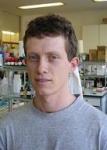Org. Synth. 2010, 87, 170
DOI: 10.15227/orgsyn.087.0170
PREPARATION OF (E)-(2-IODOVINYL)BENZENE FROM BENZYL BROMIDE AND DIIODOMETHANE
[(E)-β-STYRYL IODIDE]
Submitted by James A. Bull, James J. Mousseau, and André B. Charette
1.
Checked by Dominik J. Frank and Andreas Pfaltz.
1. Procedure
(E)-(2-Iodovinyl)benzene. A flame-dried, 500-mL, single-necked, round-bottomed flask is charged with sodium bis(trimethylsilyl)amide (19.8 g, 108 mmol, 3.60 equiv) (Note 1), and equipped with a 2.5-cm egg-shaped stir bar and with a rubber septum pierced by an argon inlet needle. Anhydrous tetrahydrofuran (72 mL) (Note 2) is added to the flask via syringe and stirring commenced. Once the base is completely dissolved, giving a yellow solution, anhydrous diethyl ether (72 mL) (Note 3) is added to the flask in two portions using a 50-mL syringe. The solution is cooled to -78 ºC (bath temperature) in a dry ice/acetone bath (Note 4).
Concurrently, solutions of diiodomethane and benzyl bromide in tetrahydrofuran are prepared. Diiodomethane: A flame-dried, 50-mL, single-necked, round-bottomed flask equipped with a rubber septum pierced by an argon inlet needle is charged with diiodomethane (3.62 mL, 45.0 mmol, 1.50 equiv) via syringe through the septum (Note 5). Anhydrous tetrahydrofuran (15 mL) is added to the flask via syringe and the flask swirled to obtain a uniform solution. Benzyl bromide: A flame-dried, 50-mL, single-necked, round-bottomed flask equipped with a rubber septum and fitted with an argon inlet needle is charged with benzyl bromide (3.56 mL, 30.0 mmol, 1.00 equiv) via syringe through the septum (Note 6). Anhydrous tetrahydrofuran (15 mL) is added to the flask via syringe and the flask swirled to obtain a uniform solution.
The solution of diiodomethane in THF is cooled to -78 ºC (bath temperature) in a dry ice/acetone bath, then added via cannula to the stirred solution of NaHMDS in THF/ether over 5 to 8 min in the dark (Notes 7 and 8). The dark red/brown mixture is stirred at -78 ºC. The solution of benzyl bromide in THF is cooled to -78 ºC (bath temperature) in a dry ice/acetone bath.
Twenty minutes after completion of the addition of diiodomethane, the cold benzyl bromide solution is added via cannula to the reaction flask over 5 to 8 min in the dark. After complete addition, the stirred mixture is allowed to slowly warm to room temperature over 14 h to 18 h (Note 9). 1,8-Diazabicyclo[5.4.0]undec-7-ene (DBU) (4.48 mL, 30.0 mmol, 1.00 equiv) is then added to the dark suspension and the mixture is stirred for a further 1 h at room temperature (Note 10).
Water (200 mL) and diethyl ether (100 mL) are added to the reaction flask and the biphasic mixture is filtered through a plug of cotton wool in a filtration funnel, under vacuum, rinsing with diethyl ether to aid transfer (50 mL) (Note 11). The mixture is transferred to a 1-L separatory funnel, and the layers separated. The aqueous layer is extracted with ether (2 × 200 mL). The combined organic layers are then washed with brine (100 mL), dried over anhydrous MgSO4 (20.0 g), filtered, washing with diethyl ether (100 mL), and concentrated at 30 ºC by rotary evaporation (500 mbar, then 20 mbar for 15 min) (Note 12). The resulting brown oil is purified by chromatography on SiO2 (150.0 g) (Note 13) packed in a 6-cm diameter column. The sample is loaded in 20 mL of n-pentane and eluted with n-pentane. The solvent is collected in 20 mL fractions, and the product elutes within the first 30 fractions (Note 14). (E)-(2-Iodovinyl)benzene is obtained as a yellow oil (5.97 g, 87%, ≥98/2 E/Z (1H NMR)) (Notes 15 and 16).
2. Notes
1.
Solid sodium bis(trimethylsilyl)amide (95%) was purchased from Aldrich and used as received. Submitters used 3.00 equiv (16.5 g, 90.0 mmol) of sodium bis(trimethylsilyl)amide. With 3.00 equiv, checkers did not obtain full conversion.
2.
Anhydrous tetrahydrofuran was obtained by filtration through a drying column on an Innovative Technology system (Newburyport, MA). Submitters used 60 mL anhydrous tetrahydrofuran which was obtained by filtration through a drying column on a Glass Contour system (Irvine, CA).
3.
Anhydrous diethyl ether was obtained by filtration through a drying column on an Innovative Technology system (Newburyport, MA). Submitters used 60 mL of anhydrous diethyl ether obtained by filtration through a drying column on a Glass Contour system (Irvine, CA).
4.
An appropriately sized dewar was used to ensure the solvent level of the reaction mixture was well below the acetone dry-ice. The dewar was well loaded with dry ice and the solution was cooled for at least 15 min prior to the first addition.
5.
Diiodomethane (99% stab. with copper wire) was purchased from Aldrich (submitters from Alfa Aesar) and used as received.
6.
Benzyl bromide was purchased from Aldrich (submitters from Alfa Aesar) and purified by distillation prior to use.
7.
The reaction flask (and dewar) are covered with a sheet of aluminum foil during the reaction time due to the potential sensitivity to light of the title compound and the 1,1-diiodoalkane intermediate.
8.
Throughout the reaction, the mixture should be well stirred to ensure good mixing and cooling. However, over-vigorous stirring, causing splashing of the reaction mixture, should be avoided.
9.
The reaction flask was left in the dry ice/acetone bath overnight, without subsequent addition of dry ice and had in general reached room temperature by morning.
10.
DBU was purchased from Fluka (submitters from Alfa Aesar) and purified by distillation prior to use. The addition of DBU at this stage ensures the complete elimination of HI from the diiodide intermediate, leading to a higher yield and easier purification.
11.
Filtration through a cotton plug removes insoluble by-products that cause problems in the separation of phases in the work up procedure.
12.
The submitters used the following pressure profile: 250 mmHg then to 20 mmHg.
13.
Silica purchased from Merck, 230-400 mesh (submitters purchased from Silicycle, 230-400 mesh).
14.
R
f 0.44 (
n-pentane) (submitters loaded the brown oil in 30 mL of hexanes and eluted with hexanes collecting 40-50 mL fractions, the product is eluted within the first 25 fractions. R
f 0.65 (hexanes).
15.
The (
E)-(2-iodovinyl)benzene displays the following spectral properties: IR (film) 3059, 3037, 1946, 1873, 1802, 1740, 1702, 1677, 1596, 1569, 1524, 1494, 1469, 1444, 1299, 1278, 1170, 1070, 1029, 1001, 983, 946, 688 cm
-1;
1H NMR
pdf (400 MHz; CDCl
3) δ: 6.83 (d,
J = 14.9 Hz, 1 H), 7.27-7.36 (m, 5 H), 7.44 (d,
J = 14.9 Hz, 1 H);
13C NMR
pdf (101 MHz; CDCl
3) δ: 76.8, 126.1, 128.5, 128.9, 137.8, 145.2; MS
m/z (relative intensity) 230 (M
+, 100), 103 (91), 77 (48), 51 (19); Anal. calcd. for C
8H
7I: C, 41.77; H, 3.07; found: C, 41.57; H, 3.19.
16.
The title compound is light sensitive and will discolor from bright yellow, becoming increasingly orange to red. However, it can be stored in the freezer for several months without noticeable decomposition by
1H NMR.
Handling and Disposal of Hazardous Chemicals
The procedures in this article are intended for use only by persons with prior training in experimental organic chemistry. All hazardous materials should be handled using the standard procedures for work with chemicals described in references such as "Prudent Practices in the Laboratory" (The National Academies Press, Washington, D.C., 2011 www.nap.edu). All chemical waste should be disposed of in accordance with local regulations. For general guidelines for the management of chemical waste, see Chapter 8 of Prudent Practices.
These procedures must be conducted at one's own risk. Organic Syntheses, Inc., its Editors, and its Board of Directors do not warrant or guarantee the safety of individuals using these procedures and hereby disclaim any liability for any injuries or damages claimed to have resulted from or related in any way to the procedures herein.
3. Discussion
Vinyl halides have become increasingly important reactants in recent years due to the advances in metal-catalyzed cross-coupling reactions, allowing the introduction of carbon-carbon double bonds with controlled regio- and stereochemistry. Vinyl halides are much less commercially available than aryl halides and there has been much interest in efficient means for their stereoselectivity preparation. The development of facile methods to access vinyl halides with high levels of stereocontrol is still required.
(
E)-β-Aryl vinyl halides are often attractive substrates in synthetic studies and for the synthesis of compounds of biological relevance.
2 (
E)-β-Styryl iodide has been prepared by several methods, including the powerful Takai-Utimoto reaction, which uses benzaldehyde and iodoform with stoichiometric (87% yield, 94/6
E/
Z) or catalytic (78% yield, 93/7
E/
Z) quantities of chromium complexes.
3 Other methods require the formation of a suitable alkene precursor followed by the installation of the halide, such as the Hunsdiecker reaction,
4 or hydrometallation of an alkyne and trapping with an electrophilic halide source.
5The procedure above provides a high yielding one-pot synthesis of (
E)-β-styryl iodide from benzyl bromide and diiodomethane.
6 This facile homologative method forms the C-C bond and installs the
E-stereochemistry. Alkylation of NaCHI
2 with benzyl bromide,
7 followed by an
in situ elimination of HI from the
gem-diiodide intermediate in the presence of excess base provides the (
E)-β-styryl iodide with high stereoselective. This method has been demonstrated to provide excellent
E-selectivities using benzyl bromides with a range of steric and electronic requirements (Table 1). Related methods allow the use of sensitive substrates and the synthesis of
E-styryl chlorides and bromides.
6This one-pot procedure for the synthesis of (E)-β-styryl iodide provides improved selectivity and minimizes waste and the need for toxic reagents.
Table 1. Synthesis of styryl iodides from benzyl bromides and diiodomethane
Appendix
Chemical Abstracts Nomenclature (Collective Index Number);
(Registry Number)
Sodium bis(trimethylsilyl)amide; (1070-89-9)
Benzyl bromide: Benzene, (bromomethyl)-; (100-39-0)
1,8-Diazabicyclo[5.4.0]undec-7-ene (DBU); (6674-22-2)
(E)-(2-Iodovinyl)benzene; (42599-24-6)
 |
André B. Charette received his B.Sc. from Université de Montréal in 1983, after which he pursued his graduate studies at the University of Rochester, earning his M.Sc. (1985) and Ph.D. (1987) with Robert Boeckman, Jr. Following NSERC postdoctoral fellowship at Harvard University with David A. Evans, he began his academic career at Université Laval in 1989. In 1992, he returned to his alma mater, where he is Full Professor and holder of an NSERC/Merck Frosst/Boehringer Ingelheim Industrial Research Chair and a Canada Research Chair. His research focuses on the development of new methods for the stereoselective synthesis of organic compounds. Honors include a Cope Scholar Award (2007), the Prix Marie-Victorin (2008) and the Alfred Bader Award (2009).
|
 |
James A. Bull was born in 1978 in Birmingham, England. He obtained his M.Sci. in Natural Sciences, Chemistry (first class honours) from the University of Cambridge. Following a year working in the pharmaceutical industry, he returned to Cambridge for his Ph.D. studies with Professor Steven V Ley, where he completed the synthesis of bisoxazole natural product bengazole A. In 2007 he joined the group of Professor André B. Charette as a postdoctoral fellow where he has developed improved conditions for the synthesis of gem-diiodides and an intramolecular Simmons-Smith cyclopropanation reaction.
|
 |
James J. Mousseau was born in Montréal, Quebec in 1981. Upon completing his B.Sc. in Honours Biochemistry in 2004 at Concordia University he continued his M.Sc. studies at Concordia under the supervision of Prof. Louis A. Cuccia and was involved in the synthesis of novel crescent shaped urea-linked heterocyclic foldamers. In 2007 he joined the group of Prof. André B. Charette at Université de Montréal to pursue his Ph.D. studies. His research currently focuses on the direct functionalization of N-iminopyridinium ylides.
|
 |
Dominik Frank was born in Bad Säckingen (Germany) in 1980. He studied Chemistry at the University of Basel where he obtained his M. Sc. in 2006 under the supervision of Prof. Andreas Pfaltz. He began his Ph. D. work in summer 2006 in the group of Prof. Andreas Pfaltz, where he is currently working on the synthesis of new chiral ligands for metal-catalyzed reactions.
|
Copyright © 1921-, Organic Syntheses, Inc. All Rights Reserved